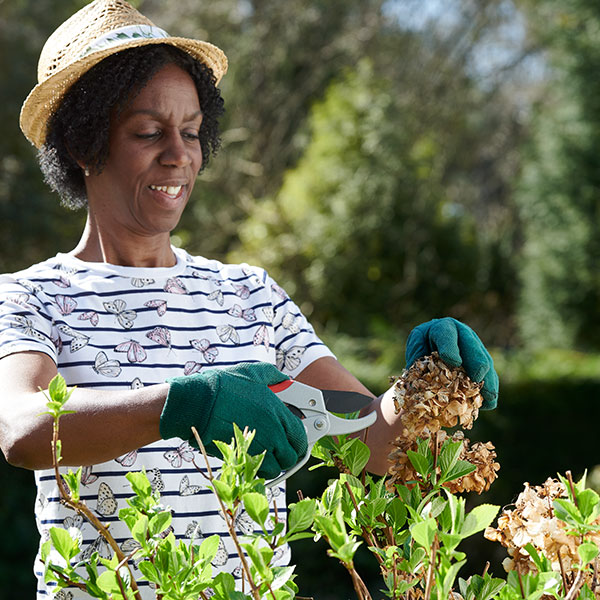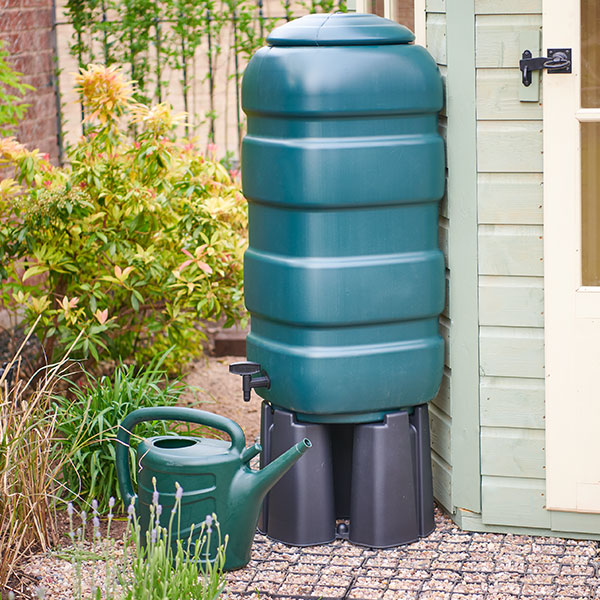What to do in the garden in March
Spring is on its way, and the longer, brighter days provide the perfect opportunity to get out into the garden and get this month’s jobs sorted. From planting bedding plants and mowing the lawn to growing your own fruit and veg, March is a great time to get started!
 By Rochelle
By Rochelle- 21st Feb 2021
- 8min read
Lawn Care
Your grass will likely wake up and start growing this month. Say hello to regular mowing once again from now on! Remember not to take it too short with the first cut of the year, and make sure the grass is as dry as possible to avoid tearing.
It’s also a good opportunity to apply lawn seed to any bare patches that have popped up over winter. Choose a lawn seed type that suits your garden use: tough lawn seed is perfect for hardwearing, high traffic areas such as kids’ play areas, whereas shady lawn seedis good for areas of the garden that are drought-resistant and get very little sunlight.
March is also a great time to start feeding lawns, giving them a helping hand on their way to looking luscious, strong and healthy. Invest in some lawn edging and garden trellis to make it easier to keep your lawn looking neat and tidy. It’s great for dividing up your vegetable patch and adding a decorative touch to your flower beds, too.
What to plant in March
From sowing seeds to planting bulbs, now is the time to start your grow-your-own adventure. Many vegetable seeds can be sown outdoors this month. If you haven’t already, make sure to prepare your seedbed by pulling up any weeds and forking in a good layer of compost before sowing seeds ready for the growing season ahead. Most seeds need a soil temperature of around 7C (45F) to germinate so if temperatures are still a bit chilly, delay planting until later in the month or simply pre-warm the soil with the help of fleece, polythene tunnel or cloches.
There’s loads that are ready to sow in March – beetroot, broad beans and peas, carrot, cauliflower, leek, lettuce, onion, radish, salad leaves, spinach, summer cabbage, Swiss chard and turnip! Beans can be sown early in the month if you start them off in a potting tray and then transfer young plants to your vegetable garden (or plant pot) when it warms up a bit more.
Towards the end of the month, you can start planting your sprouting potatoes outside too. Potato grow bags are perfect if you don’t have a lot of space spare in the veg garden – and potatoes do definitely take up a lot of growing space, so you might find this handy anyway to save a bit of space so you can try your hand at growing even more veg varieties.
Tomatoes, sweet and chilli peppers, cucumbers and aubergines can all be sown indoors now as they need more warmth – either in a warm windowsill in the house or in a heated propagator. Check the germination temperature needed as shown on the seed packets.
Transplant shrubs
Late March is a great time to move evergreen shrubs, as the soil is a little warmer. Wherever possible, prune back up to half of the top growth first to reduce the stress on the roots and make sure your transplant is successful - just be aware this might not be possible with conifers without ruining the shape.
Water the soil around the plant thoroughly the day before moving, dig up as big a root ball as you can manage to lift, and replant in well-prepared soil to help improve root growth and re-establishment. Firm the soil around the root ball, water in well, and keep well watered during dry periods for the first year.
Tall plants may need staking to help keep the roots secure while they’re establishing. If it’s still a bit chilly or windy, just protect the leaves with some fleece.
Get out the pruners in early March and prune back late summer and autumn-flowering clematis (leave pruning spring-flowering clematis until after they’ve finished flowering).

Make the most of the weather
Water butts are a good investment now to make the most of spring showers ahead of the warmer, drier weather (hopefully) coming our way! Attach a water butt to a downpipe to collect any rainfall and it will save you on water bills during warmer months, as well as give plants a natural water source they’ll thrive on.
While you’re waiting for the temperatures to pick up, why not make the most of the bright and chilly days by giving the BBQ a test run?
There’s something amazing about cooking and eating outdoors even if you do still need a jacket! Make it extra cosy with outdoor lights and a chimenea or fire pit – perfect for the cooler evenings.

Look after wildlife
Alongside looking after birds by keeping feeders topped up (essential for keeping growing families fed), now is a great time to look after wildlife in general, including our spikey hedgehog friends.
Did you know hedgehogs travel up to two miles every night in search of food? All on those tiny feet! Give them a helping hand by agreeing with your neighbours to keep a small space/hole in your fence to make their journey a little shorter – it doesn’t have to be big! And if you have the space, how about creating a secluded hedgehog-friendly corner? Pop in a hedgehog house and every now and then put down some hedgehog food for them and you’ll be sure to have some new best friends before long!
Other easy things you can do this month to help support wildlife in your area are: cleaning bird baths and feeders, put up nesting boxes for birds if you haven’t already, build a bug hotel, and sow some bee-friendly plant seeds – just look for the RHS – Perfect for Pollinators logo.
We've got loads more tips and tricks in our blog on how to attract wildlife to your garden.
March checklist
Fruit and veg
- Dig in compost or green waste into your veg patch
- Sow shallot seeds and plant onion sets
- Plant broad beans under cloches
- Continue chitting and planting early potatoes
- Divide autumn-flowering herbs
- Sow tomato and courgette seeds inside
- Remove rhubarb flowers
- Plant fruit shrubs
- Protect crops from slugs
Ornamental
- Plant summer-flowering bulbs
- Sow sweet peas outdoors
- Plant bare-rooted shrubs
- Prune summer-flowering shrubs
- Re-plant plug plants
- Lift and divide perennials
Lawn
- If the weather is mild enough, trim and feed the lawn
- Lay new turf
Indoor
- Re-pot plants and add liquid feed
- Plant indoor salad and herbs

Shop our full garden range at wilko.com.
Share your progress with us on Facebook, Instagram, TikTok & X.